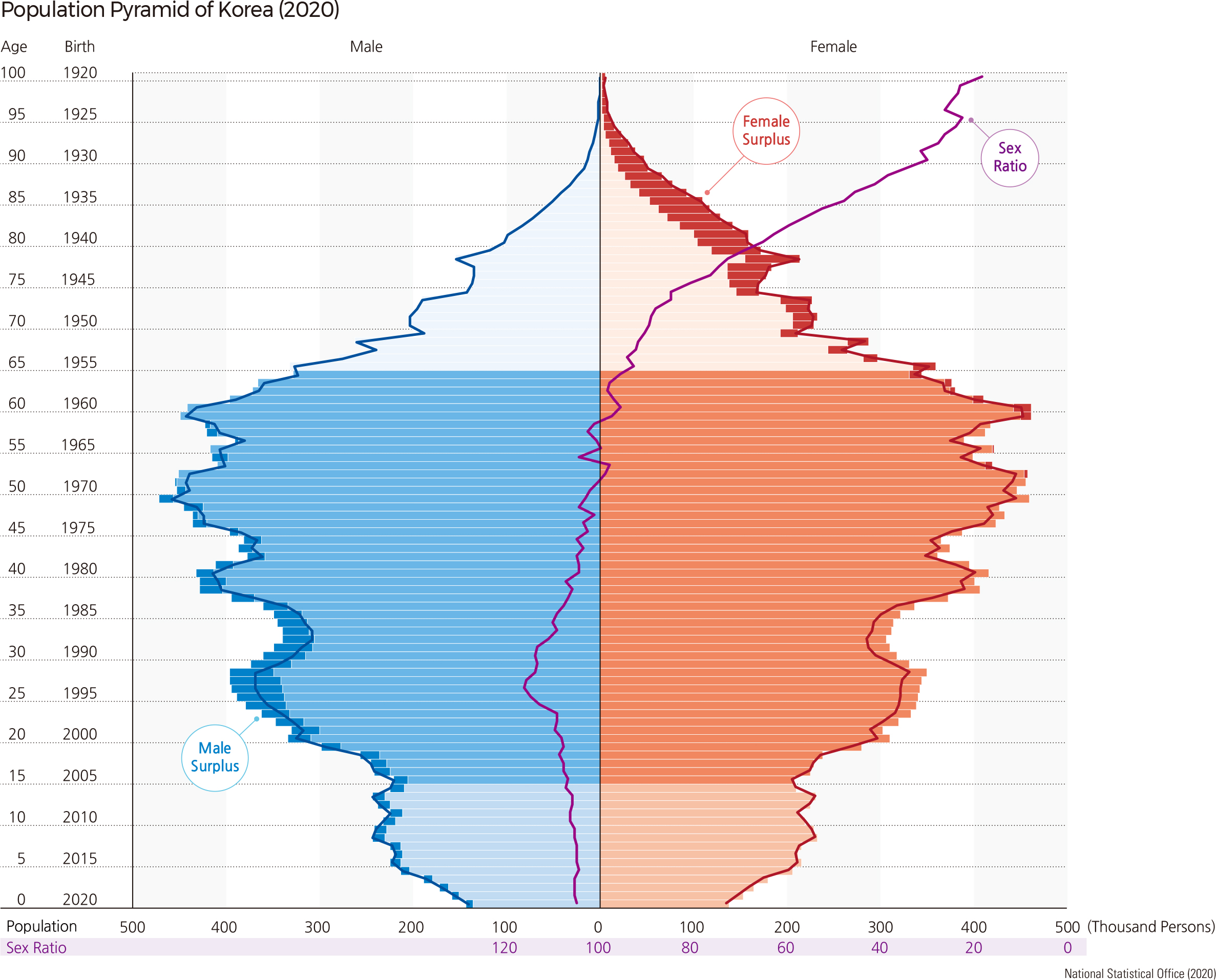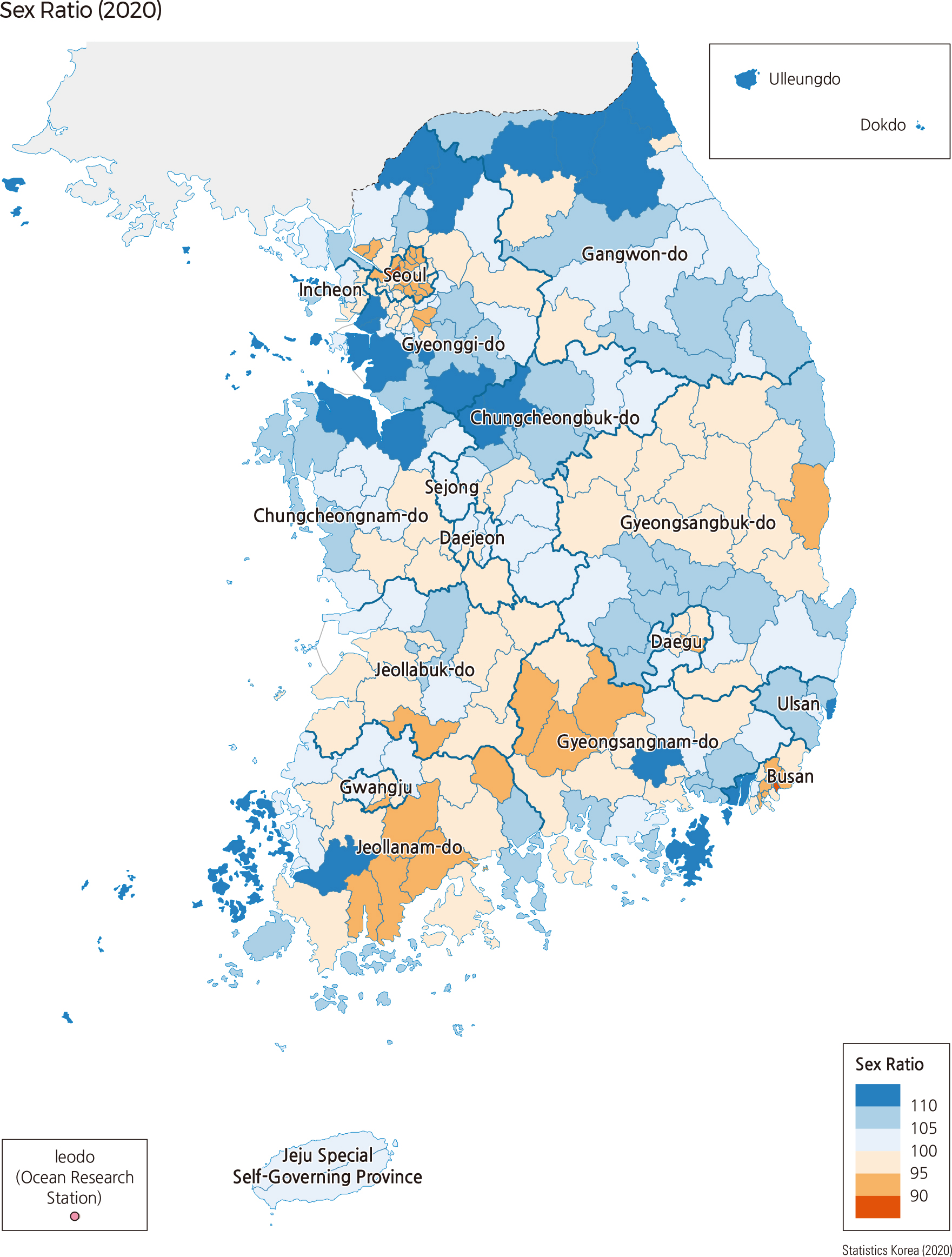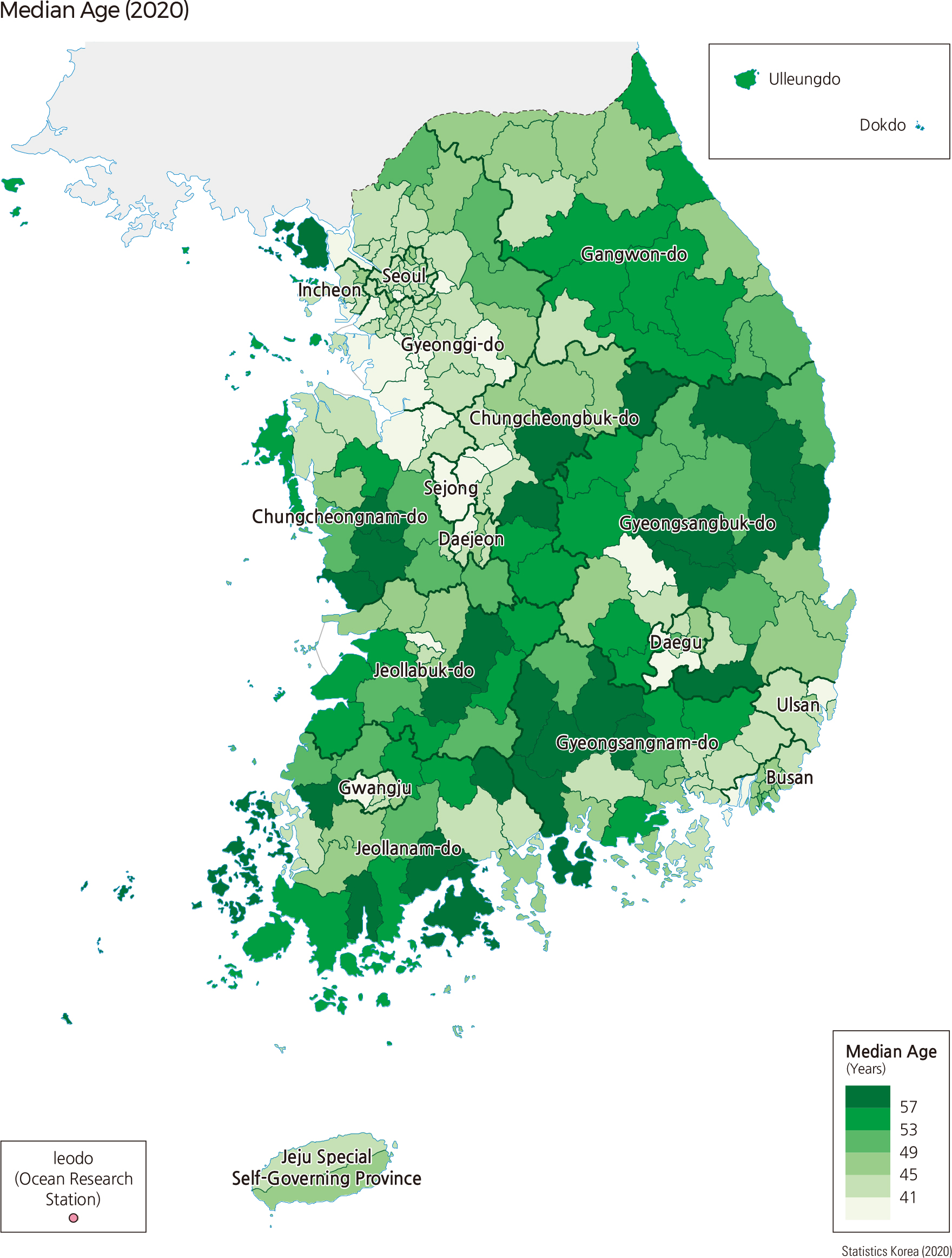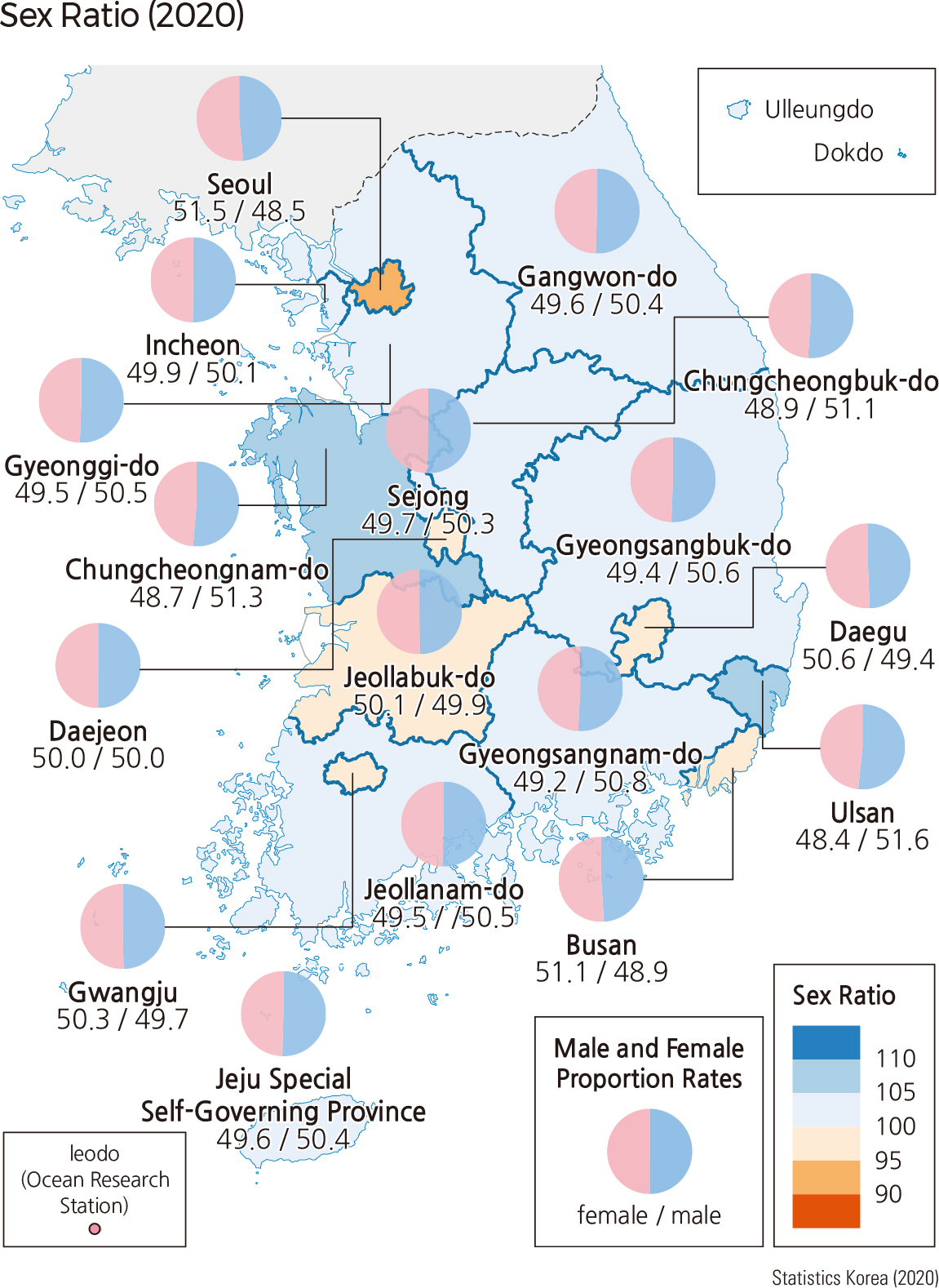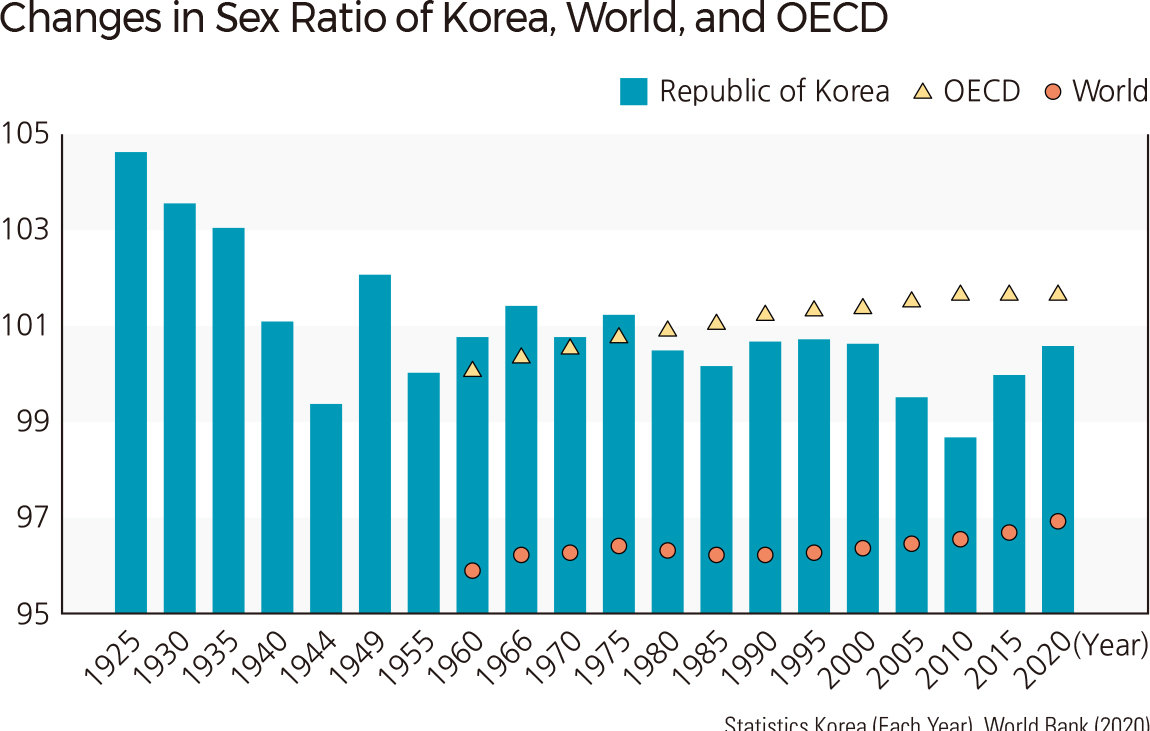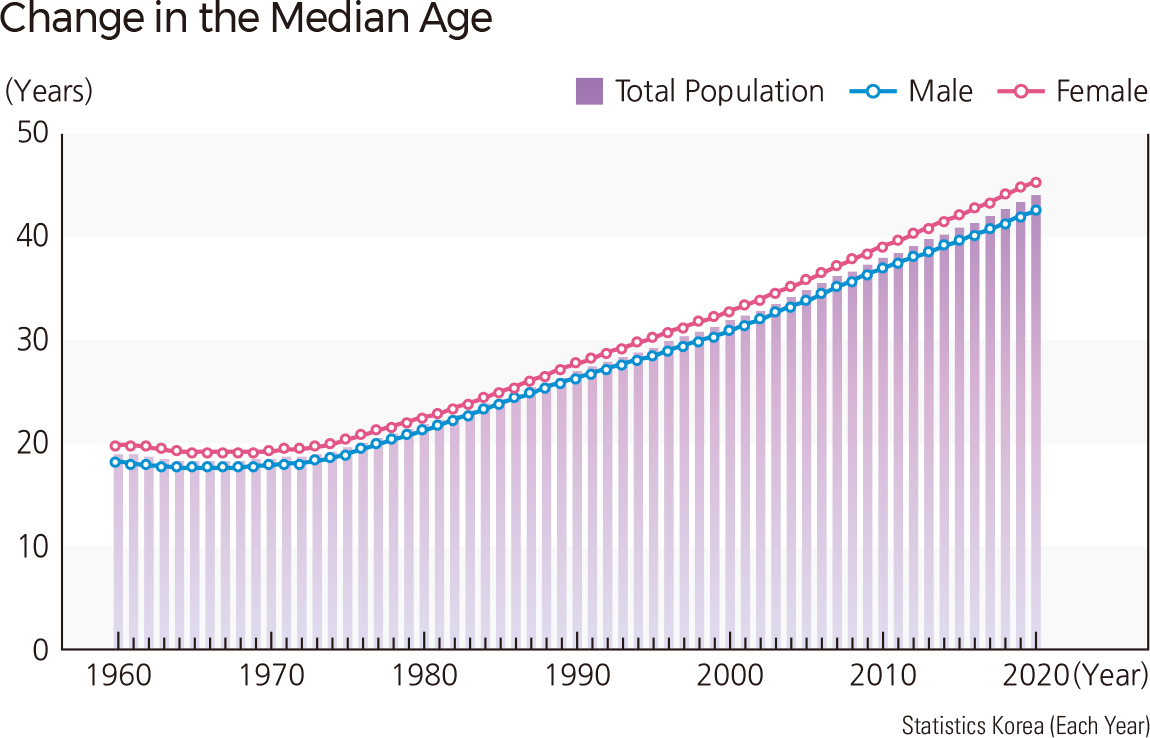English III 2021
The demographic structure is affected by factors such as birth and death; it reflects well the socio-economic characteristics of a region at a certain point in time. A country’s demographic structure can be viewed from the demographic aspects of gender and age or from the economic aspects of production and consumption. A demographic structure is represented by a population pyramid in which male and female populations are aggregated and classified at one-year intervals. A population pyramid helps better understand the characteristics of population distribution by sex and age. According to the 2020 population pyramid, the middle-aged (30-49 years old) and the elderly (50-64 years old) populations make up about 56 percent of the total population. The median ages of the total population with foreigners and the Korean domestic population are 43.9 and 44.3, respectively, indicating a high level of aging in the country. When the proportion of the population aged 65 or over of a society exceeds 14 percent of its total population, the society is often referred to as an aged society. Korea is already an aged society. Meanwhile, the proportions of infants (0-5 years old) and children (6-12 years old) are lower than the proportion of the elderly by about 4 percent and about 6 percent, respectively. If the current low fertility and high-level avoidance in marriage keep worsening, Korea will enter into a super-aging society having more than 20 percent of the elderly proportion in the total population. Considering sex ratio by age, the male population is more than the female population below 59 years old, but the opposite pattern occurs in those aged 60 or over. In economic terms, a demographic structure can be viewed with dependency ratios, such as total dependency ratio, youth dependency ratio, and old-age dependency ratio, that are calculated by working-age population (ages 15-64) and either youth population (ages 0-14) or elderly population (age 65 or older). The youth dependency ratio and the old-age dependency ratio refer to the ratios of the youth and elderly population to the working-age population, respectively, and the total dependency ratio refers to the sum of the youth dependency ratio and the old-age dependency ratio. Due to the aging of the population, the old-age dependency ratio is higher than that of the youth dependency ratio. As of 2020, the total dependency ratio is 39 percent, based on the total population with foreigners, and 40 percent with only domestic Koreans. In addition, the dependency ratio is anticipated to rise due to the decrease of the working-age population and the increase of the elderly population.
|
